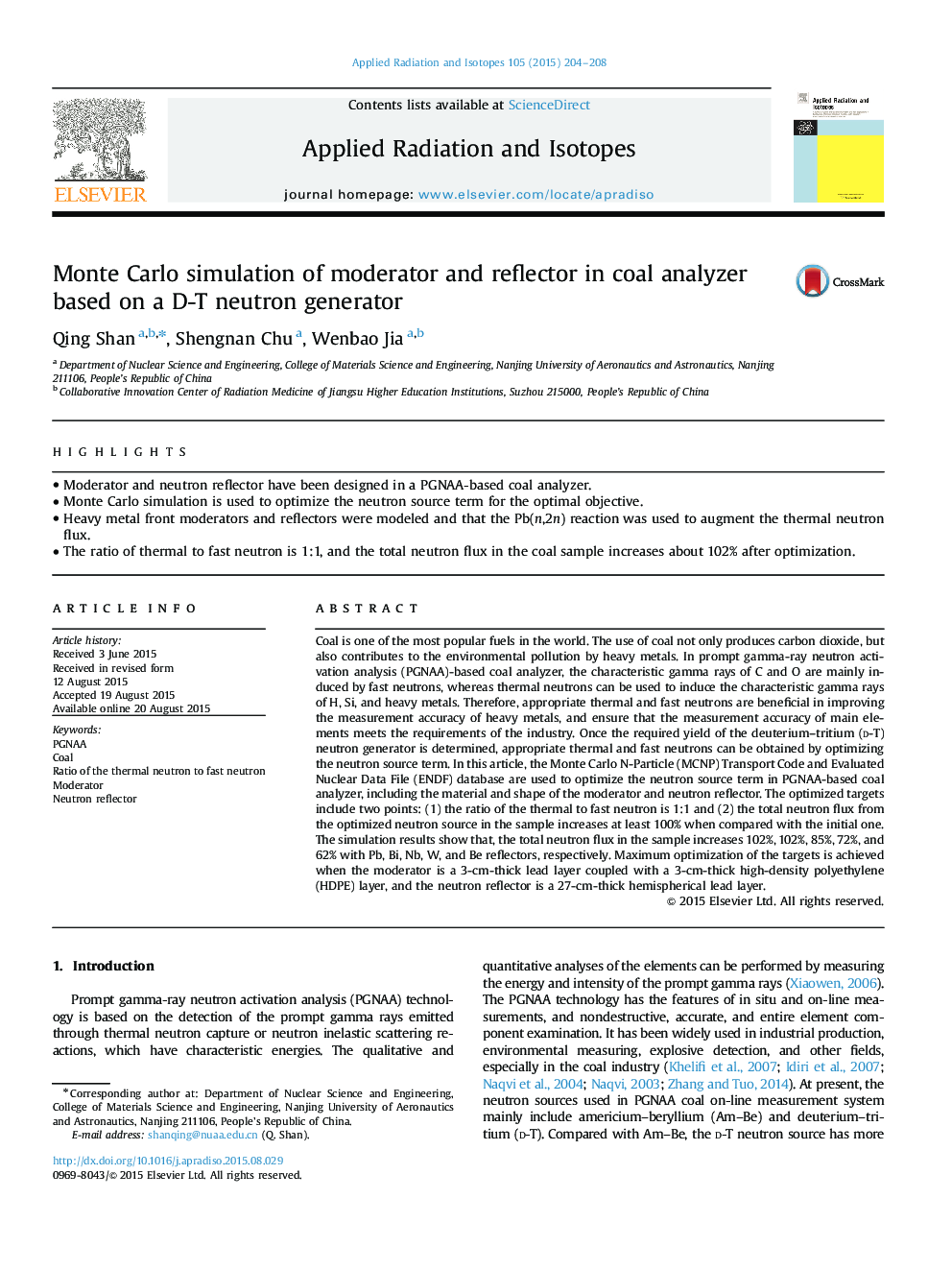| کد مقاله | کد نشریه | سال انتشار | مقاله انگلیسی | نسخه تمام متن |
|---|---|---|---|---|
| 1875830 | 1532092 | 2015 | 5 صفحه PDF | دانلود رایگان |

• Moderator and neutron reflector have been designed in a PGNAA-based coal analyzer.
• Monte Carlo simulation is used to optimize the neutron source term for the optimal objective.
• Heavy metal front moderators and reflectors were modeled and that the Pb(n,2n) reaction was used to augment the thermal neutron flux.
• The ratio of thermal to fast neutron is 1:1, and the total neutron flux in the coal sample increases about 102% after optimization.
Coal is one of the most popular fuels in the world. The use of coal not only produces carbon dioxide, but also contributes to the environmental pollution by heavy metals. In prompt gamma-ray neutron activation analysis (PGNAA)-based coal analyzer, the characteristic gamma rays of C and O are mainly induced by fast neutrons, whereas thermal neutrons can be used to induce the characteristic gamma rays of H, Si, and heavy metals. Therefore, appropriate thermal and fast neutrons are beneficial in improving the measurement accuracy of heavy metals, and ensure that the measurement accuracy of main elements meets the requirements of the industry. Once the required yield of the deuterium–tritium (d-T) neutron generator is determined, appropriate thermal and fast neutrons can be obtained by optimizing the neutron source term. In this article, the Monte Carlo N-Particle (MCNP) Transport Code and Evaluated Nuclear Data File (ENDF) database are used to optimize the neutron source term in PGNAA-based coal analyzer, including the material and shape of the moderator and neutron reflector. The optimized targets include two points: (1) the ratio of the thermal to fast neutron is 1:1 and (2) the total neutron flux from the optimized neutron source in the sample increases at least 100% when compared with the initial one. The simulation results show that, the total neutron flux in the sample increases 102%, 102%, 85%, 72%, and 62% with Pb, Bi, Nb, W, and Be reflectors, respectively. Maximum optimization of the targets is achieved when the moderator is a 3-cm-thick lead layer coupled with a 3-cm-thick high-density polyethylene (HDPE) layer, and the neutron reflector is a 27-cm-thick hemispherical lead layer.
Journal: Applied Radiation and Isotopes - Volume 105, November 2015, Pages 204–208